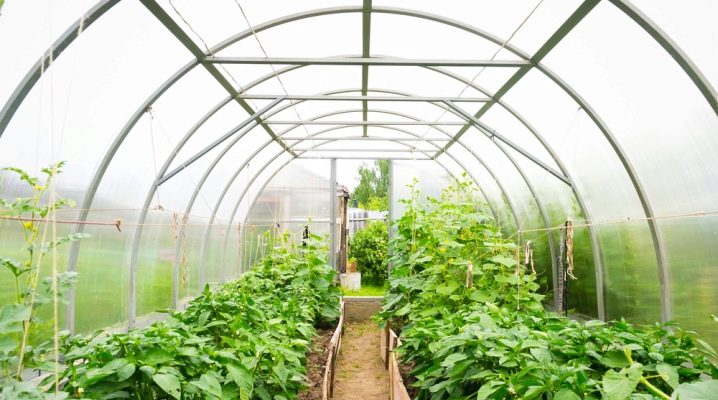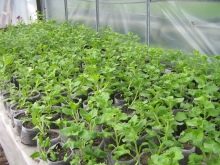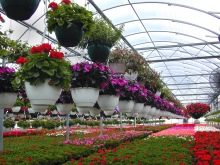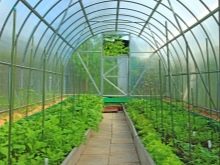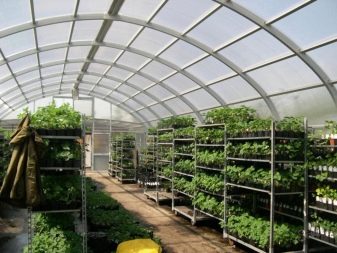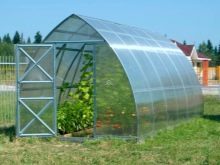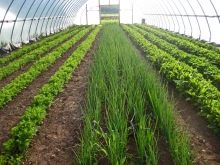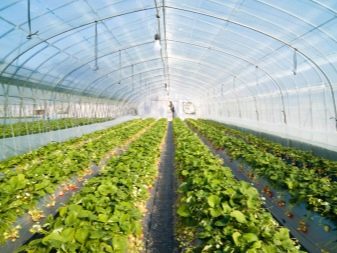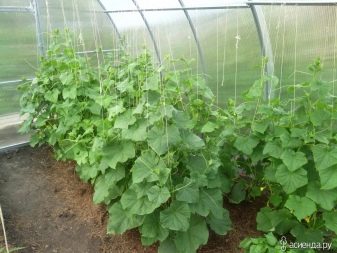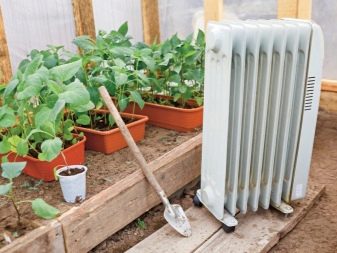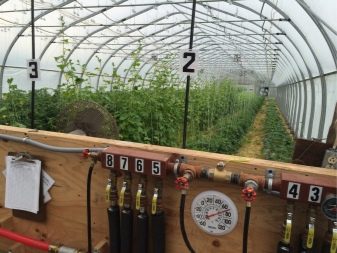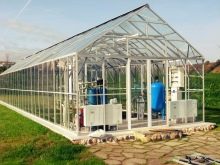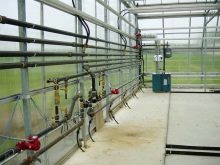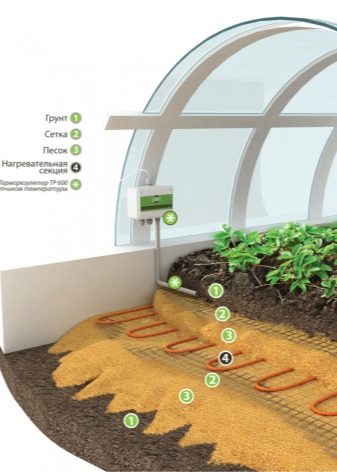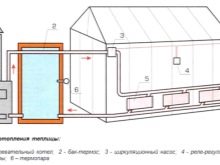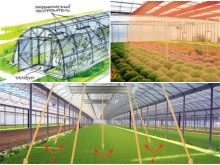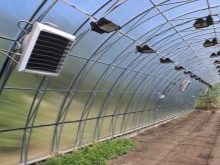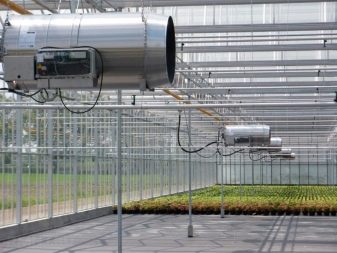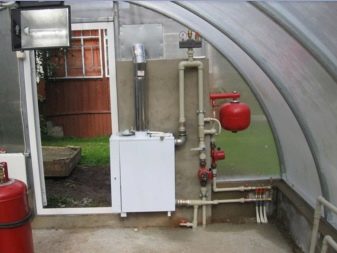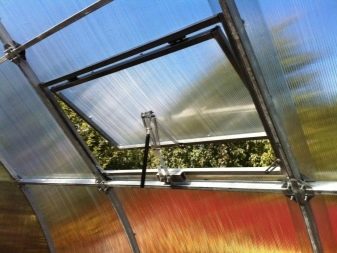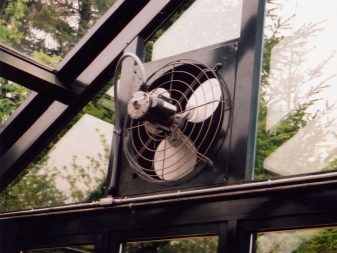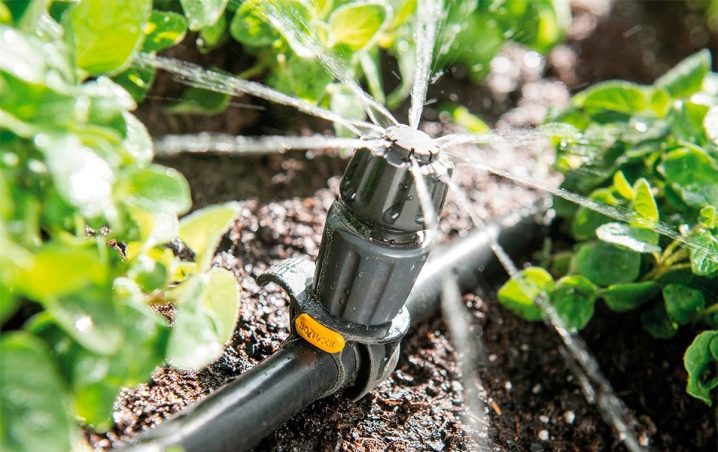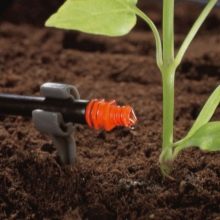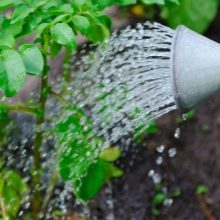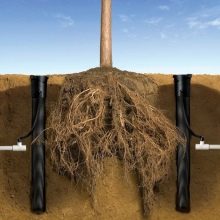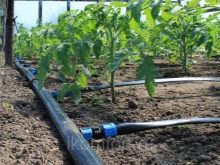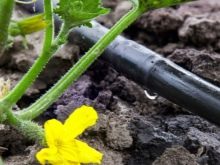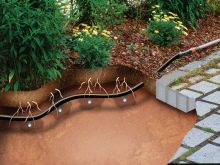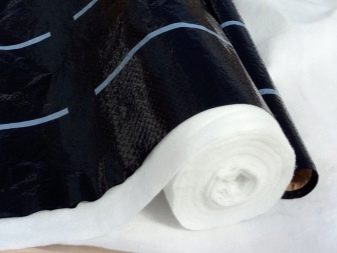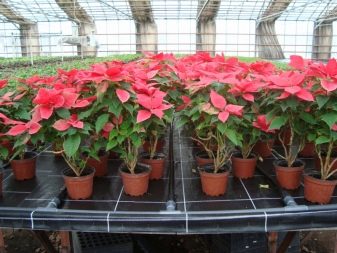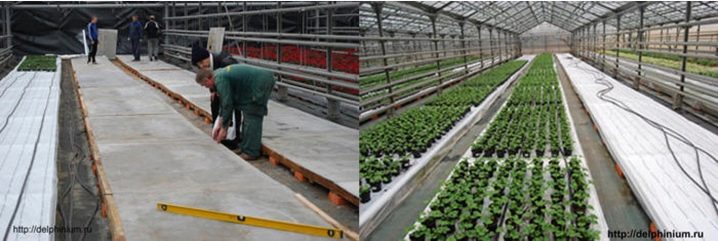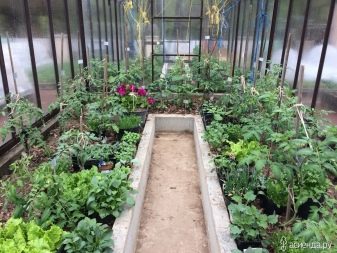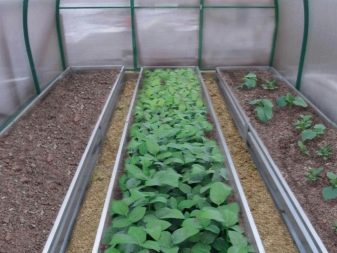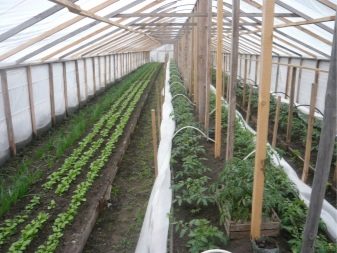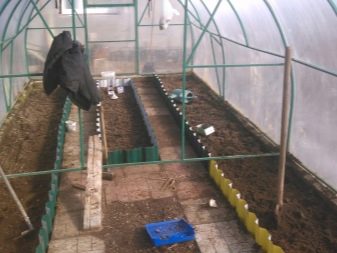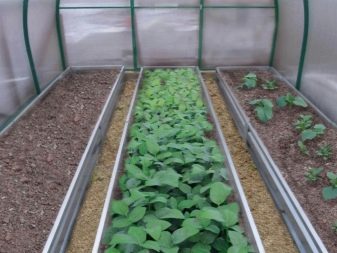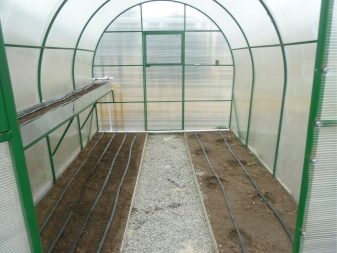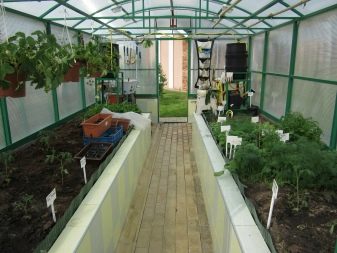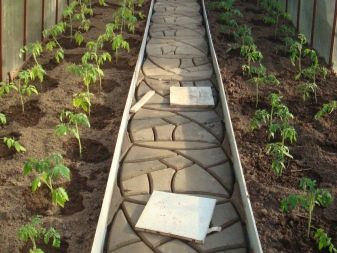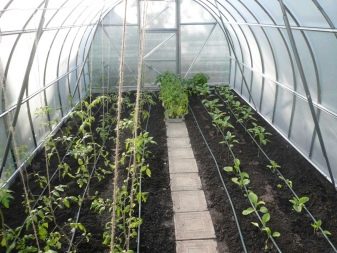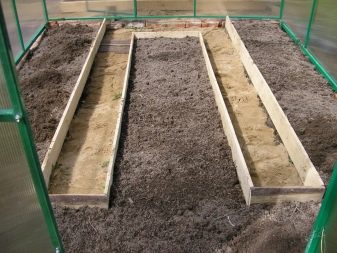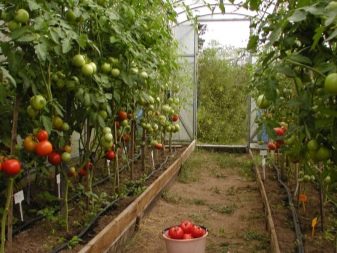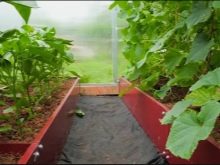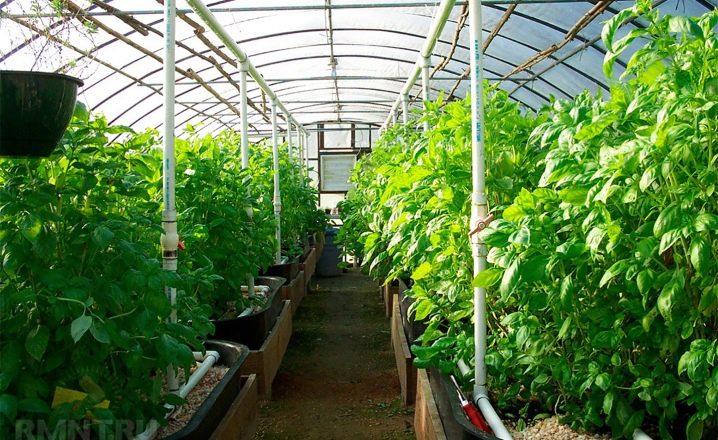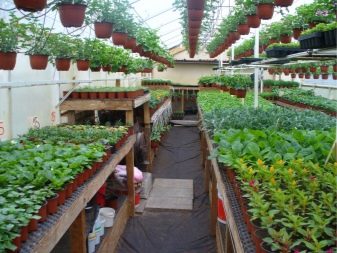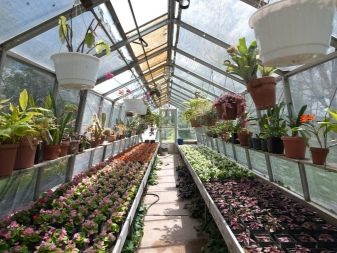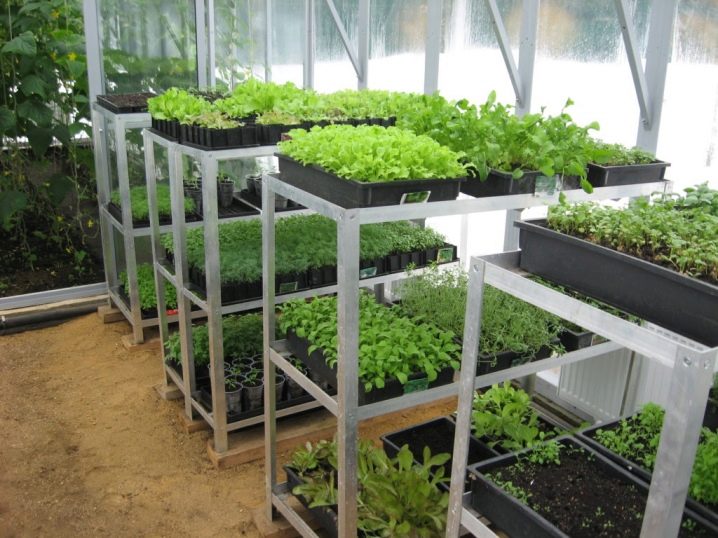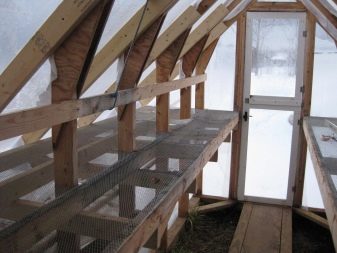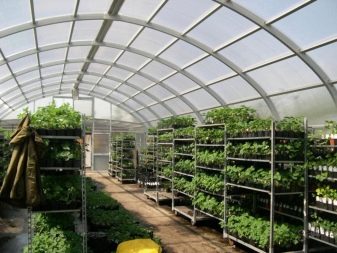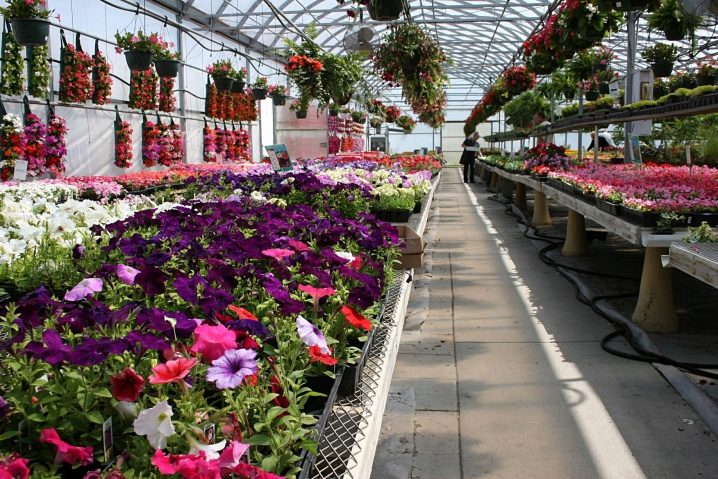Arrangement of greenhouses inside: planning tricks
Arrangement of greenhouses inside is a very important stage in the life of a novice gardener. It depends on how comfortable it will be to grow plants, care for them. And the condition of the herbs themselves, flowers and seedlings also largely depends on how well the correct microclimate is created in the room.
Features and types
A greenhouse is a space in which they grow plants or prepare them for transplanting to full-fledged beds. It can be both very compact and large, depending on the needs of gardeners and the size of the plot. Inside such a room should be maintained a certain temperature, humidity, and so on. Different tricks of the layout make it possible to combine several plant species in one room and make the most advantageous use of the available space.
Greenhouses can be different, their varieties depend on the characteristics of the internal arrangement. In some of them there are beds, in others - shelving, and in the third and all - full greenhouses. In addition, they are distinguished by the presence of various technological innovations and additional equipment. In some buildings they manage with a minimum, in others, on the contrary, they are trying to establish something new and modern, which will facilitate the process of growing plants.
Sizes and shapes: choice
Depending on the budget used and the amount of free space You can make both compact greenhouses and spacious ones.
- Most often it is small greenhouses that are chosen. They do not take up much space and at the same time allow you to grow everything you need. Compact polycarbonate greenhouse is the most popular option. In order to fit everything necessary in a 3x6 or 3 by 8 meter building, you can use options that save free space and budget. For example, to replace full-fledged beds with containers, or even altogether - with hydroponics.
- Large greenhouses are chosen mainly by those who grow seedlings or flowers for sale.In this case, the more free space, greenhouses and beds, the better. You can make different drawings, planning full automatic irrigation schemes, so that you have to spend less free time in the greenhouse.
Device
Do-it-yourself greenhouse equipment is not such a difficult task. To equip a place for growing plants, you need to make sure that the room is constantly clean and fairly humid air, as well as that the heating and water supply systems work well.
Heating
First of all, in order for the room where plants are grown to be constantly warm, you need to take care of additional heating. This is a guarantee that the seedlings can begin to grow in early spring, and it will not freeze. The heating system completely depends on the size of the greenhouse. But the most important thing is that it should be complete, not local. After all, such a system is not able to completely warm the entire room.
The second important point - the heat must certainly go from the bottom up, and not vice versa. There are three heating options that can be used in the greenhouse: gas, solid fuel and electric.
If possible, you can turn to innovative methods of heating. Among these it is necessary to allocate heated soil directly. This contributes to the rapid growth and maturation of everything growing in the ground. To carry out such a system in his greenhouse is quite possible. Heating takes place with a cable.
Before laying it is necessary to lay polystyrene foam or other means of thermal insulation, characterized by increased moisture resistance. Above you can lay a layer of sand, in which the cable is hidden. A protective net and a layer of soil are placed on top of it.
You can install a water radiator heating system. Infrared heaters are quite popular. They are also capable of illuminating the room. The use of infrared heaters is also considered very beneficial because they can be used to divide the space into several separate temperature zones.
Gas heating system is also considered profitable. Especially if it is possible to connect the greenhouse to the domestic heating system. You can also install a burner in the greenhouse or an automatic heating system with a small boiler.And in order for all the efforts spent on heating, were not in vain, you need to additionally warm the place for growing plants.
Ventilation
It is also important to think about the ventilation system. The correct temperature is created using ventilation frames. In addition, you can supplement the room with a special fan. Its installation will not only solve the problem of temperature, but also provide an opportunity to distribute heat throughout the room. This type of fan is installed on the roof. Due to this, fresh air enters the greenhouse.
At the same time, installing ventilation, you need to do everything so that in the cold season the cooled air does not penetrate into the room. And, therefore, problems with insulation, too, should not be.
Water supply
The correct level of humidity in the room also plays a very important role in the arrangement of the greenhouse. The state of plants depends on it. The fact is that if there is insufficient moisture in the room, the plants will dry out. But an overabundance of moisture is also not very good. In such an environment, the root system of the plant develops more slowly, the harvest is also not very happy.
So that the watering process does not take much time, and each plant receives as much moisture as it needs, it is necessary to equip the inside of the greenhouse with the proper water supply system.
- Feed water should always be at room temperature. Too cold water harms the roots. They quickly rot in such an environment. Also, one should not allow droplets to fall on the trunks of plants and their leaves. It hurts some sensitive plants.
- Watering plants is regularly. It is better to do this in the evenings and mornings. As for the amount of water used, it all depends on how deep the root system of the plants is. The deeper it is, the more water is required. In general, the approximate water consumption is ten or twelve liters per square meter.
There are three main ways to supply water to greenhouses: drip, irrigation and subsurface. Surface irrigation should be discarded. From this, the humidity inside increases to an undesirable level, and it becomes more difficult to control the flow of water.
Much more effective system of drip feed. In this case, less water is consumed, and it becomes much easier to automate this process. But the most convenient option is, of course, subsurface watering.For this watering you will need to lay a special pipe under the ground with numerous holes. It is through her and will be watered.
This method of supplying water is good because it goes directly to the roots. It turns out that the life-giving moisture immediately goes where it should and does not evaporate along the way. However, this method of irrigation is more suitable for large greenhouses with beds, but not for small rooms where the seedlings are grown in pots standing on the shelves.
Special attention is given to such an option as the laying of capillary mats. They are able to replace traditional irrigation methods. True, this modern method requires significant financial investments.
Capillary mat is a dense synthetic felt. It absorbs water with ease. On the surface of the mat are pots with plants. They give moisture very slowly. The surface of the capillary mat for protection against contamination and damage to the layer of felt is covered with a special porous film.
This material is very good not only absorbs moisture, but also gives it away. Under the mat you can put the usual pallets.They are installed on bricks, covered with slate sheets, and then with a layer of plastic film. Top fit capillary mat. In no case should its edges protrude beyond the edges of the film, and the mat itself must be securely attached to the slats.
When the capillary mat is laid, you can proceed to its saturation with water. This should be done exactly until the moment when the water starts to come out of the felt. It should not be allowed to form pools on the surface of the mat. If this has already happened, then you need to drive away the water.
Paths and beds: how to arrange and what to do?
If it is planned to arrange the beds with paths in the greenhouse, and not to install the shelving, then the arrangement of space should be treated with the utmost responsibility. It is not at all difficult to transfer pots or tubs from a rack to a rack, but it is difficult to remodel the beds.
Layout
This process depends on which crops will be grown and which technologies will be used for this. But in general, the standard size of the beds should not exceed 1.2 meters. If you do more, it will be difficult to care for them.And in the future it will not be possible to reach out to the plants and pick something necessary.
In one compact greenhouse can be equipped with about three beds. The passage between them should be slightly less than a meter.
As a rule, in a greenhouse one pass is made quite narrow, and the second is wider. In some cases, on the beds themselves do small cross transitions. To do this, it is not even necessary to lay a full track - you can just lay the boards on the ground.
Plant location
It is very important to properly arrange the plants so that they are in their places and can develop as well as possible. For example, all heat-loving plants should be located on the sunny side. These can be, for example, tomatoes or various flowers that reach for the sun. Cucumbers, in turn, can be placed in the west. The main thing is that for their cultivation was sufficiently high level of humidity.
Tracks
The main requirement for the tracks is that they are not slippery and react normally to elevated levels of humidity. For registration of tracks in greenhouses, as a rule, such materials as brick, concrete, paving slabs or blocks are used.You can also make the coating and less rigid. In this case, materials such as pebbles or sand are used. True, they can stick to the sole, which is very inconvenient.
Relevant and this option as a concrete fill. Tracks made in this way can also be further decorated. For this, small stones or pieces of tile are used, which are pressed into the surface of the coating. You can also enclose a walkway around the edges with materials such as clinker bricks, paving stones, or the same pebbles.
Separately worth noting tracks with filler. In this case, a layer of grass or even manure is laid over which the concrete is poured. This track is quite strong. Along the edges it can be supplemented with sides.
Often the sides are made of natural wood. But this is not the best option. The fact is that wood is usually only enough for one season. Over time, the tree rots from the inside, especially in conditions where humidity is constantly increased.
A more reliable option is the bumpers made of aluminum. They are installed once and can last up to several years.If this option is not suitable, you can pay attention to the curbs made of high-quality galvanized iron. Such paths, decorated sides, can be located not only inside but also outside the structure.
On this accomplishment greenhouses with beds ends. Then you can proceed to the design of the space. True, since this room is more working, its design should not be too sophisticated.
Shelving arrangement
The second design option greenhouses - is the organization in the room shelving. This way of solving the internal space is more suitable for working with saplings or seedlings. They can even be installed in several rows, which is very convenient.
However, when installing such racks you need to consider all the features of the development of certain plants. Everything that is installed in this way must withstand the appropriate conditions. Plants grown on racks should not be too thermophilic. Those of them that are most strongly drawn to the light should be installed on the upper shelves.
Shelves themselves do not so difficult. They should not be too massive and wide.The width of the classic rack reaches ninety-five centimeters. The height can be different, it is chosen so that it is convenient to work with plants. Even the top shelves should be freely available.
There are various forms of shelving. Someone more convenient to work with narrow rectangular shelves, and someone prefers square. Here the choice is very individual and often depends on the size of the room.
The main requirement for them is not at all according to some parameters. Shelving in the first place should be strong and stable. This is due to the large weight of the pots with seedlings and seedlings.
It is imperative to select racks from the material that is able to withstand a large load and special conditions in greenhouses.
The most affordable option is, of course, wood. But if you need to equip the room so as to forget about the repair and replacement of racks, then wood products should be abandoned. The only acceptable option is properly treated wood. But here the cheapness is already out of the question.
You can consider this option, as racks with a frame made of aluminum alloy, painted steel or durable plastic. This is probably the most correct choice, since all the listed materials do not rot, withstand high loads and are distinguished by long service life. The money spent on the purchase of such a rack, will pay off over time, because it will stand much longer than a similar construction of wood.
The last stage of working with a greenhouse of this type is the placement of shelves and plants on them. It is important to arrange everything in such a way that each type and type of plants gets everything that it needs. So, for example, seeds germinate properly in a shaded corner, where artificial light is installed. This zone is additionally insulated with glass. Otherwise, you just need to figure out the conditions in which these or other saplings and plants should be in order for them to be as comfortable as possible, and do the rearrangement “for themselves”.
The arrangement of the greenhouse from the inside can become even more complicated and important stage than its construction. After all, only having equipped everything, and having carried out systems of heating, water supply and ventilation, it is possible to organize conditions suitable for growing seedlings and plants almost all year round.
To learn how to lay out the beds in the greenhouse, see the next video.
